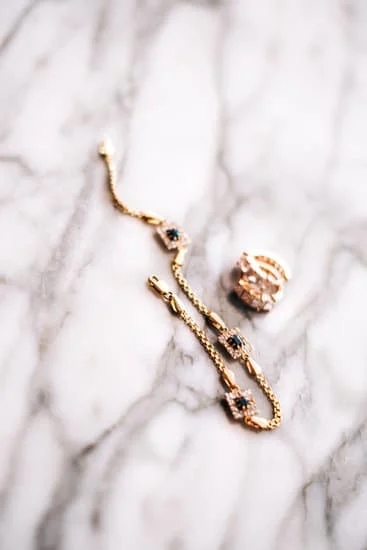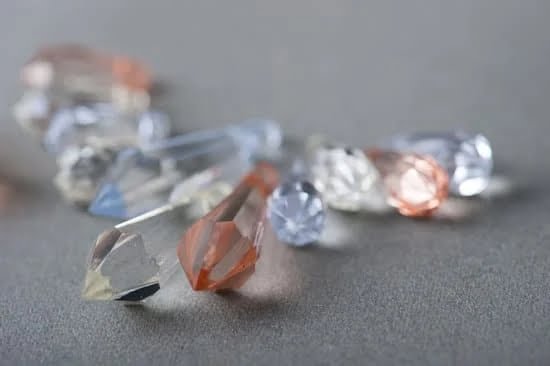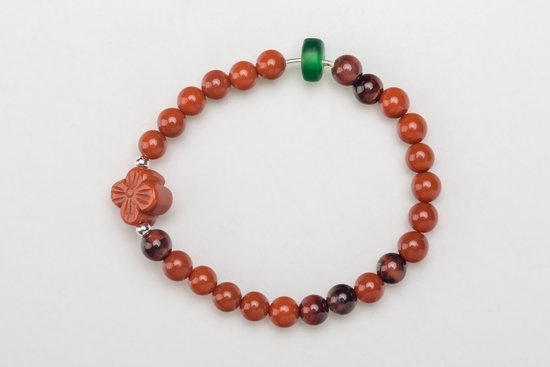Mosaic Small Jewelry Box DIY is a creative and fulfilling project that is perfect for crafts enthusiasts. This article will guide you through the process of creating your own unique mosaic jewelry box, from understanding the basics to adding personal touches and applying finishing touches. Whether you are a beginner or an experienced crafter, this DIY project will allow you to express your creativity and enhance your crafting skills.
Creating a mosaic small jewelry box not only provides a beautiful piece of art but also serves as a functional storage solution for your precious jewelry. The process of making a mosaic involves arranging small pieces of tiles or glass into patterns or designs, which can be both therapeutic and engaging. With this project, you can let your imagination run wild and create a personalized masterpiece that reflects your style and personality.
In this article, we will provide a step-by-step tutorial on how to create the base for the jewelry box, select and arrange tiles for the mosaic pattern, apply and finish the grout, add embellishments such as beads or charms, apply protective coating for durability, and explore creative ways to display and store your finished piece. Additionally, we will offer troubleshooting tips to help overcome common challenges that may arise during the DIY process.
Embarking on this Mosaic Small Jewelry Box DIY project will not only result in a stunning piece of art but also provide an empowering experience of creating something with your own hands. So grab your materials and get ready to dive into the world of mosaics as we guide you through each step towards creating your very own customized mosaic small jewelry box.
Understanding the Basics
One of the first crucial steps in starting any DIY project is gathering all the necessary materials. The same goes for creating your own mosaic small jewelry box. Having a complete understanding of the materials needed will not only ensure that you have everything on hand before you begin, but it will also help you plan and budget accordingly. Here is a list of the basic materials you will need for your mosaic small jewelry box DIY project:
Mosaic Tiles
These are the main elements that will make up the design of your jewelry box. Mosaic tiles come in various shapes, sizes, colors, and materials such as glass, ceramic, or stone. Consider mixing different types of tiles to add visual interest and texture to your design.
Adhesive
You will need a strong adhesive to attach the mosaic tiles to the surface of your jewelry box. It is recommended to use a waterproof adhesive suitable for the material of your tiles and the base of your jewelry box.
Grout
Grout is an essential component in completing your mosaic small jewelry box project. It fills in the spaces between the tiles and provides stability and durability to your design. Select a grout color that complements or contrasts with your tile choices.
Protective Coating
Applying a protective coating to your finished mosaic small jewelry box will not only enhance its shine but also protect it from scratches and maintain its longevity over time. Consider using a clear acrylic sealer or any other suitable coating recommended for the material of your tiles.
Tools
In addition to these materials, there are several tools that will be helpful during this project, including:
– Tile Nippers: Used for cutting or shaping mosaic tiles.
– Tweezers: Useful for placing smaller or delicate tiles precisely.
– Mixing Tools: Depending on the adhesive and grout used, you may need a mixing spatula or a small container for blending and applying these substances.
By gathering all these materials beforehand, you can ensure a smooth and uninterrupted creative process. Moreover, having everything organized will save you time and avoid any unnecessary frustrations during the project. Once you have everything ready, you can move on to the next step of creating the base for your mosaic small jewelry box.
Step-by-Step Tutorial
Creating the base for the mosaic small jewelry box is an essential step in this DIY project. The base serves as the foundation for your mosaic design and provides support for the tiles and grout. By following these step-by-step instructions, you can create a sturdy and aesthetically pleasing base for your jewelry box.
Firstly, gather all the materials needed for this step of the project. You will need a wooden or cardboard box in the desired size, wood glue (if using a wooden box), or white glue (if using a cardboard box). Additionally, prepare a sanding block or sandpaper, a ruler or measuring tape, and a pencil.
Begin by preparing your chosen box. If you are using a wooden box, lightly sand its surface to remove any rough edges or imperfections. This will ensure that the tiles adhere smoothly to the surface. For a cardboard box, reinforce its structure by gluing additional layers of cardboard inside if necessary.
Next, measure and mark off any areas on the box that you do not want to cover with tiles. This could include hinges, latches, or any other parts that need to remain uncovered. These markings will guide you during the tile placement process later on.
Apply glue evenly over the surface of your box using either wood glue or white glue, ensuring complete coverage. If using wood glue, allow it to dry partially before proceeding to allow for better adhesion when placing tiles.
Once your base is prepared and dry to touch (but still slightly tacky), you are ready to move on to the next step: designing the mosaic pattern.
Designing the Mosaic Pattern
When it comes to designing a mosaic pattern for your small jewelry box, the possibilities are endless. The key to creating a visually stunning and cohesive design is to carefully select and arrange the tiles on the surface of the box.
One approach to designing your mosaic pattern is to choose tiles in a specific color palette or theme. For example, you can opt for a monochromatic design using different shades of blue, or create a beach-themed mosaic using various shades of green, blue, and white. To make your selection process easier, consider gathering a variety of tiles in different colors, shapes, and textures before you begin.
Once you have collected your tiles, it’s time to start arranging them on the jewelry box surface. It is helpful to have an outline or template of your desired design beforehand to guide you. You can use a pencil or chalk to lightly mark out your design boundaries.
There are several ways you can arrange your tiles for a balanced and visually appealing mosaic pattern. One popular method is called tessellation, where you fit each tile snugly against its neighboring tile without any gaps in between. Another approach is called random placement, where you arrange the tiles in a more organic and asymmetrical manner.
To ensure that your mosaic pattern stays intact during the gluing process, it’s important to work in small sections at a time. Apply adhesive directly onto one small area of the jewelry box surface and then carefully press each tile into place before moving onto the next section.
Creating a beautiful mosaic pattern for your small jewelry box requires patience and attention to detail. Take your time when selecting and arranging the tiles on the surface as this will ultimately determine the overall aesthetic appeal of your finished project. Remember that experimenting with different arrangements and patterns can result in unique designs that reflect your personal style and creativity.
The Art of Grouting
Grouting is an essential step in the process of creating a mosaic design on a small jewelry box. It not only serves as a means to securely attach the tiles to the surface, but it also enhances the overall look of the design by filling in the gaps and providing a cohesive finish.
In this section, we will explore the art of grouting and provide step-by-step instructions on how to apply and finish the grout for your mosaic small jewelry box.
Before you begin grouting, it is important to gather all the necessary materials. These include:
– Grout: Choose a grout color that complements or contrasts with your tile color to create different effects. Make sure to select a type of grout that is suitable for small-scale projects like jewelry boxes.
– Grout Float: This tool is used to evenly spread and press down the grout into the gaps between the tiles.
– Sponge: A damp sponge is used for cleaning excess grout from the tiles without disturbing them.
Now, let’s move on to applying and finishing the grout:
- Prepare the grout according to the manufacturer’s instructions. Mix it until you achieve a smooth, paste-like consistency.
- Using a grout float, scoop up some grout and spread it diagonally across the entire surface at a 45-degree angle. Press firmly into each gap between the tiles, making sure they are completely filled.
- Once all the gaps are filled with grout, use the edge of your grout float to scrape off any excess grout from the surface, being careful not to remove too much from between the tiles.
- After about 15 minutes, when the grout starts to firm up but is still pliable, use a damp sponge to gently wipe away any excess grout from tile surfaces without disturbing or displacing them. Rinse out your sponge frequently to prevent smearing or staining.
- Allow the grout to dry for at least 24 to 48 hours, following the manufacturer’s instructions.
- Once the grout is fully dried, use a clean, dry cloth to buff and polish the tiles, removing any remaining haze or residue.
Congratulations. You have successfully completed the grouting process for your mosaic small jewelry box. The grout not only provides stability and durability but also enhances the beauty of your mosaic design. In the next section, we will explore ways to add personal touches to your jewelry box by embellishing it with beads, shells, or charms.
| Materials Needed | Description |
|---|---|
| Grout | Used to fill in the gaps between tiles and provide stability. |
| Grout Float | A tool used to spread and press down the grout into the gaps. |
| Sponge | Damp sponge used for cleaning excess grout from tiles. |
Adding Personal Touches
Choosing the Perfect Embellishments
When it comes to adding personal touches to your mosaic small jewelry box, the possibilities are endless. Beads, shells, and charms are popular embellishment options that can enhance the overall design and add a unique touch to your creation. Before you begin adding these embellishments, take some time to consider the theme or style you want to achieve.
For a bohemian look, consider using colorful beads in various shapes and sizes. You can also incorporate seashells for a beachy or coastal vibe. If you prefer a more elegant and sophisticated design, opt for delicate charms that match the color scheme of your mosaic tiles. The key is to select embellishments that complement your chosen mosaic pattern and reflect your personal taste.
Placement and Arrangement of Embellishments
Once you have gathered your desired embellishments, it’s time to plan their placement on the mosaic small jewelry box. One approach is to use beads as accents along the edges or corners of the box lid, creating a border effect. Alternatively, you can scatter them randomly throughout the mosaic pattern for a whimsical touch.
Seashells can be arranged in clusters or individually placed as focal points within the design. Charms, on the other hand, can be attached strategically using jump rings or wire loops to create movement and depth in your jewelry box.
Regardless of which embellishments you choose, make sure they are securely attached with strong adhesive suitable for both glass tiles and mixed media materials.
Exploring Additional Embellishment Ideas
While beads, shells, and charms are common embellishment options for mosaic small jewelry boxes, there are other ways to further personalize your creation. Consider incorporating other materials such as vintage buttons, decorative trinkets, or even miniature figurines that hold sentimental value.
You may also experiment with adding hand-painted accents using acrylic paints or metallic markers, which can enhance the details of your mosaic design. Additionally, you could incorporate decorative ribbons, lace trims, or fabric scraps around the edges of the box for a soft and textured touch.
Remember, the goal is to add individuality and creativity to your mosaic small jewelry box. Don’t be afraid to explore different embellishment options and techniques until you achieve the desired look that truly reflects your personal style.
Finishing Touches
Choosing the Right Coating
After completing the mosaic design on your small jewelry box, it is crucial to apply a protective coating to ensure its long-lasting durability and shine. The right coating not only protects the tiles from damage but also enhances the overall aesthetic appeal of the jewelry box.
There are several options to choose from when it comes to coating materials, such as epoxy resin, varnish, or clear acrylic sealer. Each option has its own advantages and considerations depending on your personal preferences and the level of protection you desire.
Application Techniques
Once you have chosen the appropriate coating material, it’s time to apply it to your mosaic small jewelry box. Start by preparing a clean and well-ventilated workspace. Place your jewelry box on a protected surface to avoid any mess or damage to surrounding areas. Carefully follow the instructions provided with your chosen coating material for best results.
One common technique for applying coatings is using a foam brush or a soft-bristle paintbrush. Dip the brush into the coating material and apply it evenly over the entire surface of the jewelry box. Make sure to cover all crevices and edges for complete protection. Avoid excessive brushing or overlapping strokes, as this may result in uneven application or streaks.
Drying and Curing Process
After applying the protective coating, allow sufficient time for drying and curing according to the manufacturer’s instructions. This step is crucial in order for the coating to fully bond with the mosaic tiles and provide optimal durability. Keep in mind that curing time can vary depending on factors such as temperature and humidity levels.
During this process, it is important to keep your jewelry box in a clean and dust-free environment. Any contaminants that come into contact with the coating while it is still wet can mar its final appearance or compromise its protective qualities.
By following these steps and ensuring proper drying and curing, you can achieve a glossy and resilient finish on your mosaic small jewelry box. The protective coating not only adds longevity to your creation but also gives it a professional look that you can proudly display or gift to others.
Display and Storage Ideas
Once you have completed your mosaic small jewelry box DIY project, you may be wondering how best to display and store your beautiful creation. Fortunately, there are numerous creative ways to showcase your mosaic small jewelry box, allowing it to become a stunning addition to your home décor.
One option is to place your mosaic small jewelry box on a vanity or dresser. This allows easy access to your favorite pieces of jewelry while also adding a decorative touch to the space. You can choose to display the jewelry box on its own or pair it with other small decorative items such as candles or figurines for an aesthetically pleasing arrangement.
Another idea is to use your mosaic small jewelry box as a focal point in a larger display. You can create a dedicated spot on a shelf or bookcase where your jewelry box takes center stage. Surround it with meaningful objects such as photographs, trinkets, or sentimental mementos that complement the style and color palette of your mosaic design.
If you’re looking for a more unique way to showcase your mosaic small jewelry box, consider mounting it on the wall as an art piece. This allows you to fully appreciate the intricate details of your creation while also freeing up valuable countertop or surface space. Hang the jewelry box at eye level in a bedroom, walk-in closet, or even in the bathroom for easy access and added visual interest.
As for storing your jewelry within the box itself, consider using different compartments or dividers to keep everything organized and easily accessible. Soft lining materials such as velvet or silk can help protect delicate pieces from scratches. Additionally, you may want to label certain sections of the box for specific types of jewelry – rings, earrings, bracelets – so that it’s easier to find what you’re looking for.
Troubleshooting Tips
Creating a mosaic small jewelry box can be a satisfying and rewarding project for crafts enthusiasts, but like any DIY endeavor, it can come with its fair share of challenges. In this section, we will discuss some common issues you may encounter during the process and provide troubleshooting tips to help you overcome them.
One common challenge is uneven tile placement. Sometimes, despite your best efforts, the tiles may not align perfectly or lay flat on the surface of the box. To fix this issue, try using a pair of tweezers or a toothpick to adjust the positioning of the tiles before pressing them down firmly. Additionally, if certain areas appear raised or uneven after grouting, gently tap those areas with a rubber mallet or use 220-grit sandpaper to level them out.
Another potential problem is grout discoloration. It is essential to pay attention to the mixing ratios and drying time when working with grout.
If you notice that your grout has dried to an unexpected color or has become patchy in certain areas, it may be due to improper mixing or inadequate cleaning during the grouting process. To avoid this issue, make sure to mix your grout thoroughly according to the manufacturer’s instructions and clean off any excess grout from the tiles promptly.
Furthermore, adhesive failure can occur if you do not properly prepare the surface of your jewelry box before applying the tiles. Ensure that you clean and dry the base thoroughly before starting your project. It is also helpful to lightly sand the surface for better adhesion. If you find that individual tiles keep falling off after they have been glued down, carefully remove them and clean both sides with rubbing alcohol before reapplying them using a fresh layer of adhesive.
By being aware of these common challenges and following these troubleshooting tips, you can make your mosaic small jewelry box DIY experience more enjoyable and achieve the desired results. Remember, it’s all part of the creative process, and with patience and persistence, you can overcome any hurdles that arise during your project.
Conclusion
Creating your own mosaic small jewelry box can be a truly empowering experience for crafts enthusiasts. Not only does it allow you to showcase your creativity and artistic skills, but it also provides a sense of accomplishment and pride in having made something beautiful and unique with your own hands.
Throughout the step-by-step tutorial, we have discussed the materials needed, the process of creating the base, designing the mosaic pattern, applying the grout, adding personal touches, and finishing the box with a protective coating. Now, as we conclude this article, let us reflect on the overall experience of embarking on this DIY project.
One of the most fulfilling aspects of creating a mosaic small jewelry box is the opportunity for self-expression. By selecting and arranging tiles that resonate with your personal style and aesthetic preferences, you are able to infuse your own unique touch into every aspect of the design.
You have full creative control over selecting colors, shapes, patterns, and even embellishments such as beads or charms. This freedom allows you to create a piece that truly reflects who you are and what you love.
Additionally, there is great satisfaction in completing each step of the process. The initial excitement of gathering all the necessary materials and preparing them for use sets the stage for an immersive journey into craftsmanship.
As you progress through each step – from building the base to applying grout to adding personal touches – you witness your creation taking shape and coming to life before your very eyes. The sense of achievement that comes with completing each phase serves as motivation to continue pushing forward towards completion.
Ultimately, creating your own mosaic small jewelry box is about more than just crafting an object; it is about embracing creativity and tapping into one’s artistic potential. It serves as a reminder that artistry exists within each one of us, waiting to be explored and celebrated.
So go ahead – gather your materials, let inspiration guide you, and embark on this empowering journey to create something truly special and unique. The world is waiting to admire the beauty you create with your own hands.

Welcome to my jewelry blog! My name is Sarah and I am the owner of this blog.
I love making jewelry and sharing my creations with others.
So whether you’re someone who loves wearing jewelry yourself or simply enjoys learning about it, be sure to check out my blog for insightful posts on everything related to this exciting topic!





